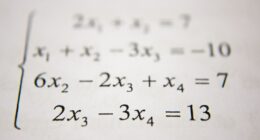A conjecture is an educated guess based on observations, while a theorem is a proven fact. Theorems must be able to be backed up by mathematical evidence, while conjectures do not require such evidence.
What is a conjecture?
A conjecture is an educated guess based on observations. Conjectures can be based on a small amount of evidence. Conjectures can lead to theorems – they’re just not as certain.
What is a theorem?
A theorem is a logical consequence of a set of premises. The most common type of theorem is a mathematical one. A theorem is a statement that has been proven to be true using rigorous mathematical proof. Theorems must be airtight. Theorems are considered the golden standard in mathematics.
Conjecture Vs. Theorem
A conjecture is an educated guess or hypothesis that has not been proven. A theorem is a statement that has been proven to be true. The main difference between a conjecture and a theorem is that a conjecture is based on observations and hypotheses, while a theorem is based on facts and figures.
What is an example of a conjecture?
For example, you might conjecture that all animals with four legs are mammals. This would be based on your observation that all the animals you know with four legs (e.g., dogs, cats, cows) are mammals. To turn a conjecture into a theorem, mathematicians use a process of deduction. They start with a set of axioms (assumed truths) and use them to logically deduce the truth of the conjecture.
How to write a conjecture or theorem
To write a conjecture, start by stating the claim that you believe to be true. Then, give evidence or reasoning for why you believe this to be true. You can also provide examples to support your conjecture. Remember that a conjecture is only an educated guess, so it is okay if you are not 100% sure of your claim.
To write a theorem, start by stating the claim that you have proven to be true. Then, provide proof of your theorem using mathematical reasoning. Your proof should be airtight and logical; it should leave no room for doubt that your theorem is indeed true. Once your proof is complete, congratulations- you have just written a theorem!
Photo by JESHOOTS.COM on Unsplash








